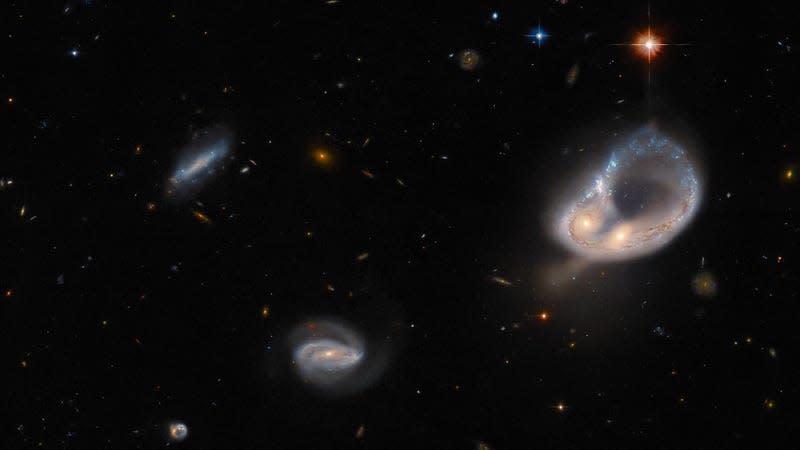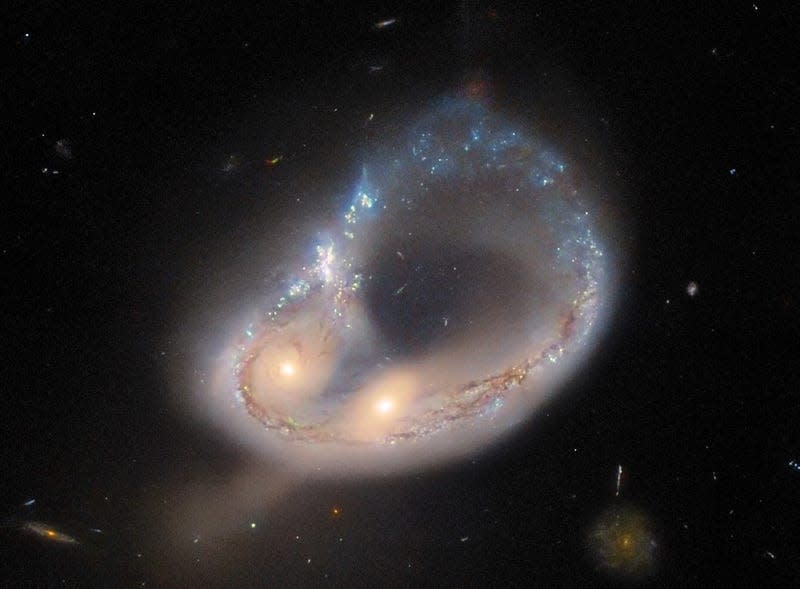Hubble Telescope Observes Surreal Galactic Collision

The James Webb Space Telescope has been getting all the attention these days, but Hubble, in space since 1990, continues to make stunning astronomical observations.
The latest Hubble image shows Arp-Madore 417-391, a galactic merger located 670 million light years from Earth. The celestial spectacle can be seen from the southern hemisphere in the Eridanus constellation. As NASA explains, the “two galaxies were distorted by gravity and twisted into a colossal ring, leaving their cores nestled side by side.”
Read more

The image was made possible by Hubble’s onboard Advanced Camera for Surveys (ACS), which is designed for this exact sort of thing—spotting distant, ancient galaxies. Hubble is set to retire by the end of the decade, but NASA and SpaceX are currently hatching a plan to extend the aging telescope’s lifespan.
Astronomers are currently using Hubble as a scouting tool for the recently deployed James Webb Space Telescope, which has already produced some of the most stunning astronomical images we’ve ever seen. Hubble, when not making previously scheduled observations, is inspecting some lesser-known galaxies, allowing astronomers to compile a list of interesting galaxies for Webb to perform follow-up observations.
Arp-Madore 417-391 is one of many fascinating objects in the Arp-Madore catalog, a collection that includes other interacting galaxies—including one with a distinctly face-like appearance.
More: Webb Telescope Reveals Noxious Atmosphere of a Planet 700 Light-Years Away
More from Gizmodo
The Best Shortcuts On Mac: Snap Windows, Text to Speech, and More
How to Delete Your Twitter Account If Elon Musk Was Your Last Straw
Sign up for Gizmodo's Newsletter. For the latest news, Facebook, Twitter and Instagram.

